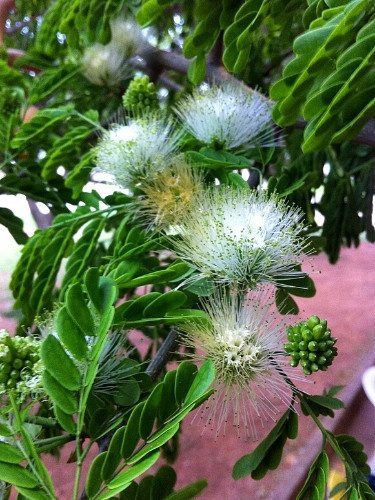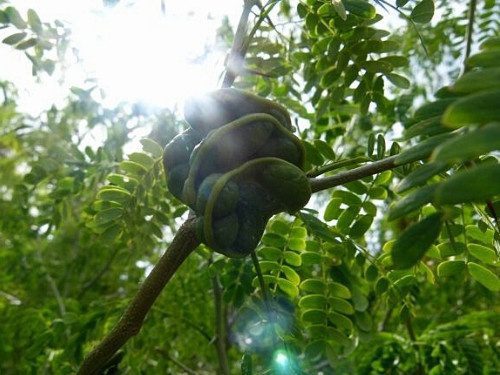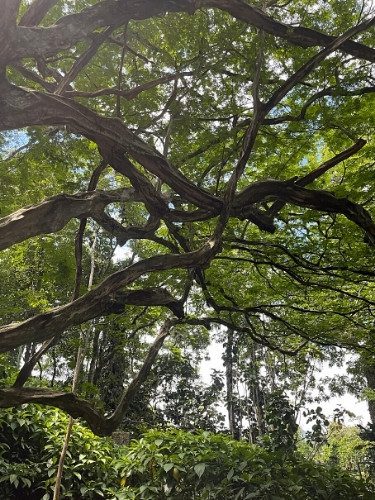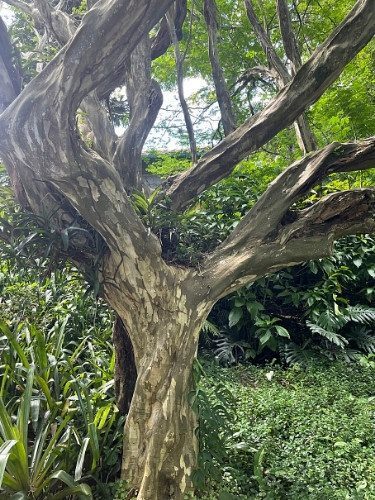Tataré is a deciduous tree with a perennial life cycle, ornamental in nature, characterized by its distinctive, twisted trunk with marbled tones. Native to the Atlantic Forest in Rio de Janeiro, it thrives in the coastal region between the forest and the sandy coastal plain. Presently, it is considered “critically endangered” by the International Union for Conservation of Nature and Natural Resources.

It can reach heights of up to 39.4 feet (12 meters), although it usually stays around 23 feet (7 meters). Its crown is low, wide, open, and rounded, with a twisted trunk that can grow up to 19.7 inches (50 cm) in diameter. Its branches have numerous ramifications and may or may not have thorns. The trunk’s bark is grayish, smooth, peeling, revealing a hidden white surface underneath. The final appearance is beautifully marbled, reminiscent of another tree from the same family, the Brazilian ironwood (Caesalpinia leiostachya).
Tataré leaves are green, oval-shaped, leathery, compound bipinnate, with 3 to 4 pairs of pinnae and up to 8 pairs of oblong leaflets. Inflorescences emerge in spring-summer, forming clustered glomerule-type delicate white to yellow flowers. They take on a globular shape resembling a pom-pom, with numerous stamens and a strong aroma. These flowers attract many bees that feed on their abundant nectar and pollen. As for the fruit, it matures between late winter and early spring. Known as the “monkey’s ear,” it is a flattened, twisted legume with a helical or spiral shape. When ripe, it is reddish-brown and contains numerous oval, flat, pale yellow seeds with low germination capacity.

Tataré gained popularity as an ornamental tree through the designs of Roberto Burle Marx, who used it in the Flamengo Park (Rio de Janeiro – Brazil). It’s an ideal tree for street, park, square, and general urban landscaping. As such, it can be used in the landscape restoration of degraded areas, as it’s not demanding regarding soil conditions. Its twisted, marbled stem has a significant sculptural appeal, providing distinctiveness to residential and institutional projects. Utilizing tataré in gardens and urban areas offers both aesthetic and ecological benefits, as it’s a threatened species that attracts pollinators. It’s the kind of tree you’d love to sit under for reading, picnicking, or simply admiring your garden. It can also be cultivated in pots to decorate balconies, patios, and terraces. Another interesting use is training it as a bonsai, given that its twisted trunk, small leaves, and horizontal canopy are highly desired traits in this art. Tataré wood is strong and beautiful, making it useful in carpentry and crafts.

It should be grown in full sun and prefers sandy, well-draining soils rich in organic matter. Despite its resemblance to resilient cerrado trees, tataré prefers areas with higher rainfall. When potted, water regularly to ensure the substrate doesn’t completely dry out between waterings, but never let it become waterlogged. After being established in the garden, it tolerates short periods of drought, and supplemental watering should be provided. Fertilization should occur during the growing season, as soon as new leaves start to emerge. Use NPK fertilizers designed for trees, following the manufacturer’s recommendations, and add organic matter to the soil. It’s recommended to water the soil well before applying fertilizer to aid absorption and prevent root burn. Propagation is done through seeds, which should be sown shortly after harvest during spring and summer. Use a light, sandy substrate and keep it moist in a shaded area. Germination occurs within 30 days and is low (20%).


